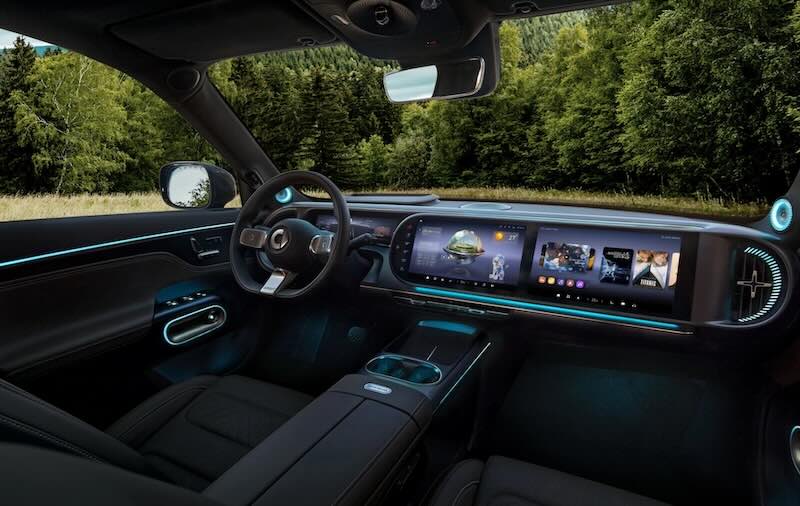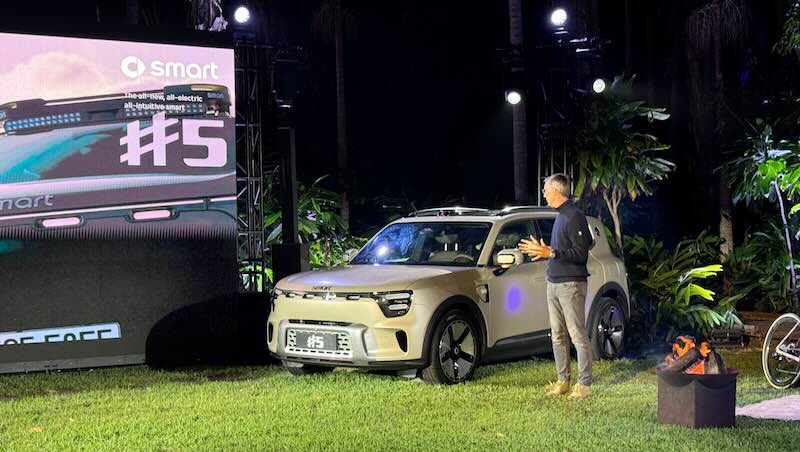Smart, once synonymous with compact urban mobility, is taking a bold leap into new territory with its latest offering, all-new Smart #5 summit edition and premium+ models. This vehicle represents a significant departure from the brand’s roots, blending Chinese technological prowess with European design sensibilities in a package that’s anything but small.
The Smart #5 stands as a testament to the collaborative efforts between China and Germany. It incorporates cutting-edge Chinese technologies such as an 800V high-voltage platform and 4C fast charging capabilities. The interior boasts zero-gravity seats and a dual-screen setup for both driver and passenger, complemented by a massive 25.6-inch AR-HUD. These features are balanced with distinctly European elements, including side steps, roof racks, and a robust 1.6-ton towing capacity.

Perhaps the most striking European influence comes from Mercedes-Benz’s design team. Global chief designer Gorden Wagener reportedly invested significant time and effort into the Smart #5, overseeing every stage from initial sketches to the final design freeze. This dedication is evident in details like the seat controls integrated into the door panels, a first for Smart and a nod to Mercedes-Benz’s signature style.
At 4705 mm in length, Smart #5 shatters preconceptions of what a Smart vehicle should be. While not necessarily large by general standards, it represents a monumental shift for a brand that built its reputation on ultra-compact city cars. This move into the mid-sized electric SUV segment is a strategic one, targeting a market with an annual volume of over 6 million units—nearly four times larger than the compact electric SUV space where the Smart #1 and #3 compete.
Despite its increased dimensions, the Smart #5 maintains the brand’s core values of light luxury, trendiness, and personalization. Design elements like the illuminated D-pillar logo and integrated backpack add emotional appeal, while partnerships with brands like Trek and HEIMPLANET continue Smart’s tradition of unique collaborations.
Smart has managed to keep the turning diameter under 10.5 meters, preserving the brand’s emphasis on agility despite the 2.9-meter wheelbase. This technical achievement underscores Smart’s commitment to maintaining its core DNA even as it expands into new segments.
Smart #5’s market strategy is equally intriguing. With China accounting for just over half of Smart’s global sales, the brand is rapidly expanding its presence in the country. By the time the Smart #5 launches, Smart aims to have dealerships in 100 Chinese cities, up from the current 82.
While ensuring a globally consistent standard, Smart is tailoring the #5’s configurations to different markets. The inclusion of features like fridges and lager screens reflects a product definition logic influenced by China’s massive market scale. However, this approach allows for adaptability in other regions, ensuring the Smart #5 can resonate with diverse consumer preferences worldwide.
As Smart gears up for a technology conference on September 20 and subsequent media test drives, the automotive world watches with bated breath. Will the Smart #5 successfully bridge the gap between its compact car heritage and this bold new direction?
